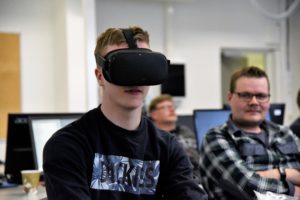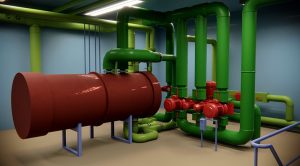
Visibility for Mining Industry with Gamification
There are as many as 46 mines in Finland, with more than 5,000 employees in 2018. Especially in northern Finland, the mining industry is an

There are as many as 46 mines in Finland, with more than 5,000 employees in 2018. Especially in northern Finland, the mining industry is an

FrostBit Software Lab has followed the development of the Flutter platform (created by Google) with great interest for the last few years. Our laboratory has

Figure 1. VR in teaching at Lapland University of Applied Sciences (Photo credits: FrostBit Software Lab) Often, challenging times bring resilience and inspiration for creative

A digital twin (Digital Twin) is a virtual model of a product, process, or service. It can be used to visualize the operation of the

As a software lab, FrostBit is not a traditional software development unit, although we have a web and mobile team in addition to the XR

Everyone who is familiar with software technology trends within past few years has surely met with the concepts of machine and deep learning as well